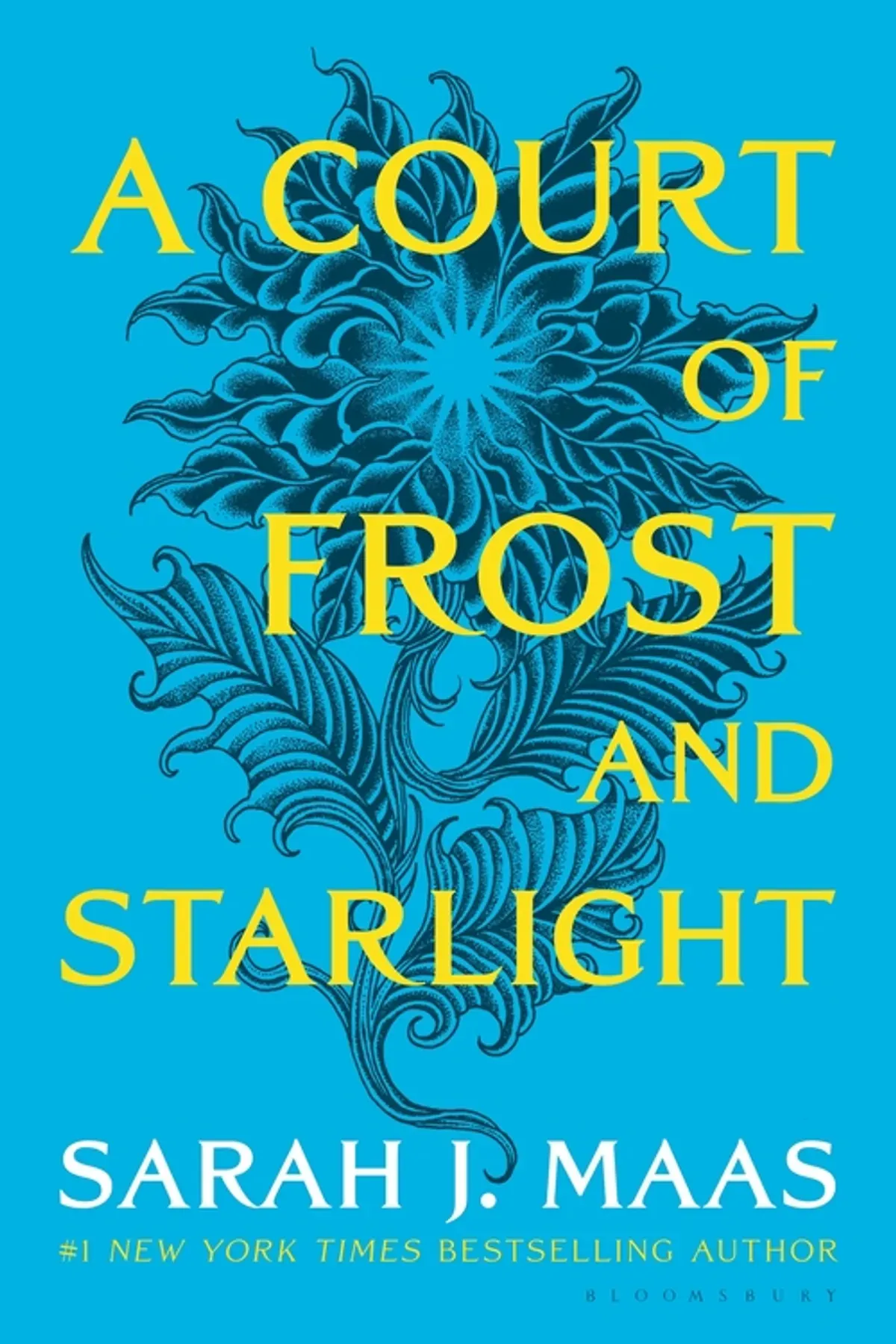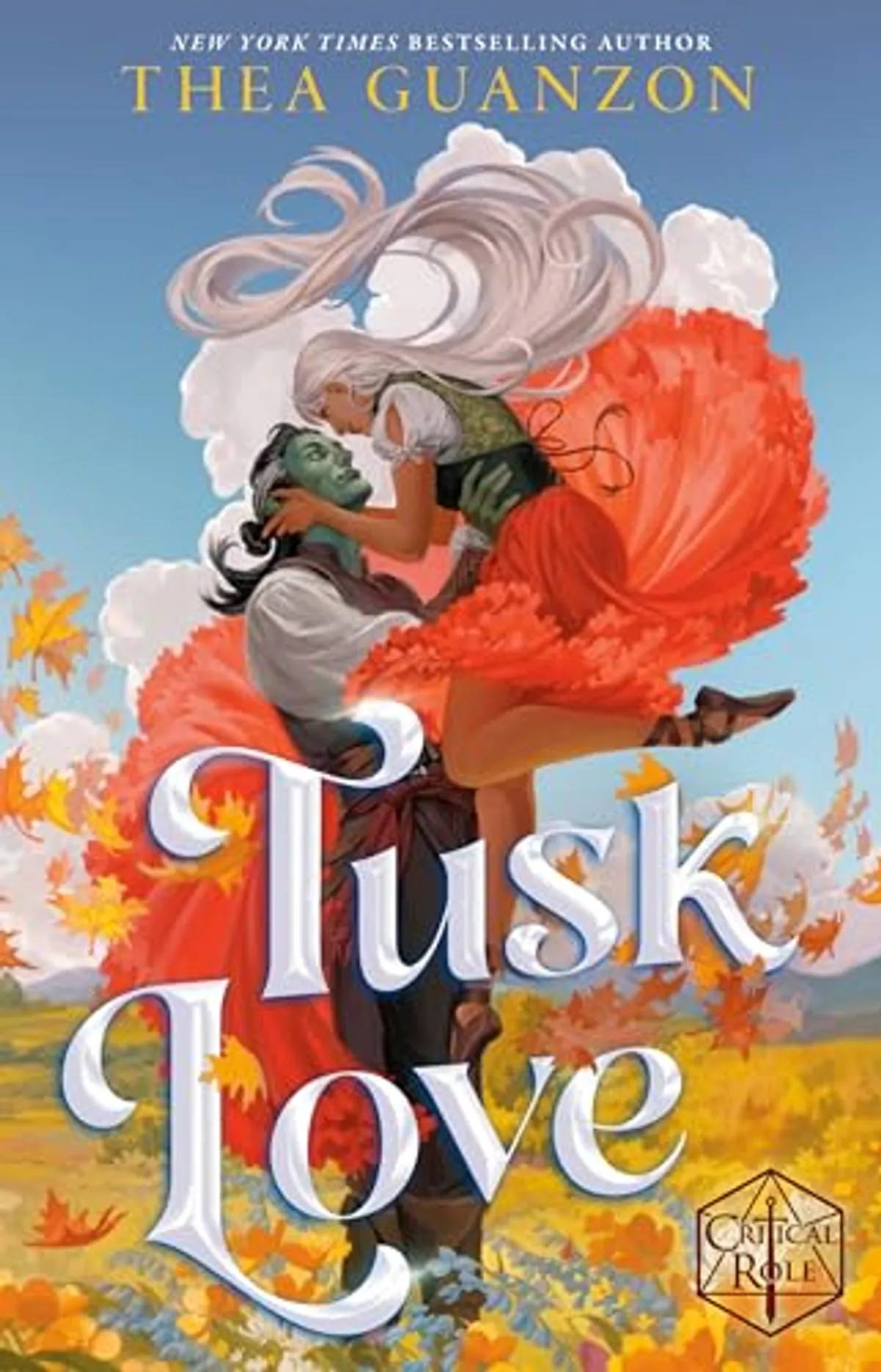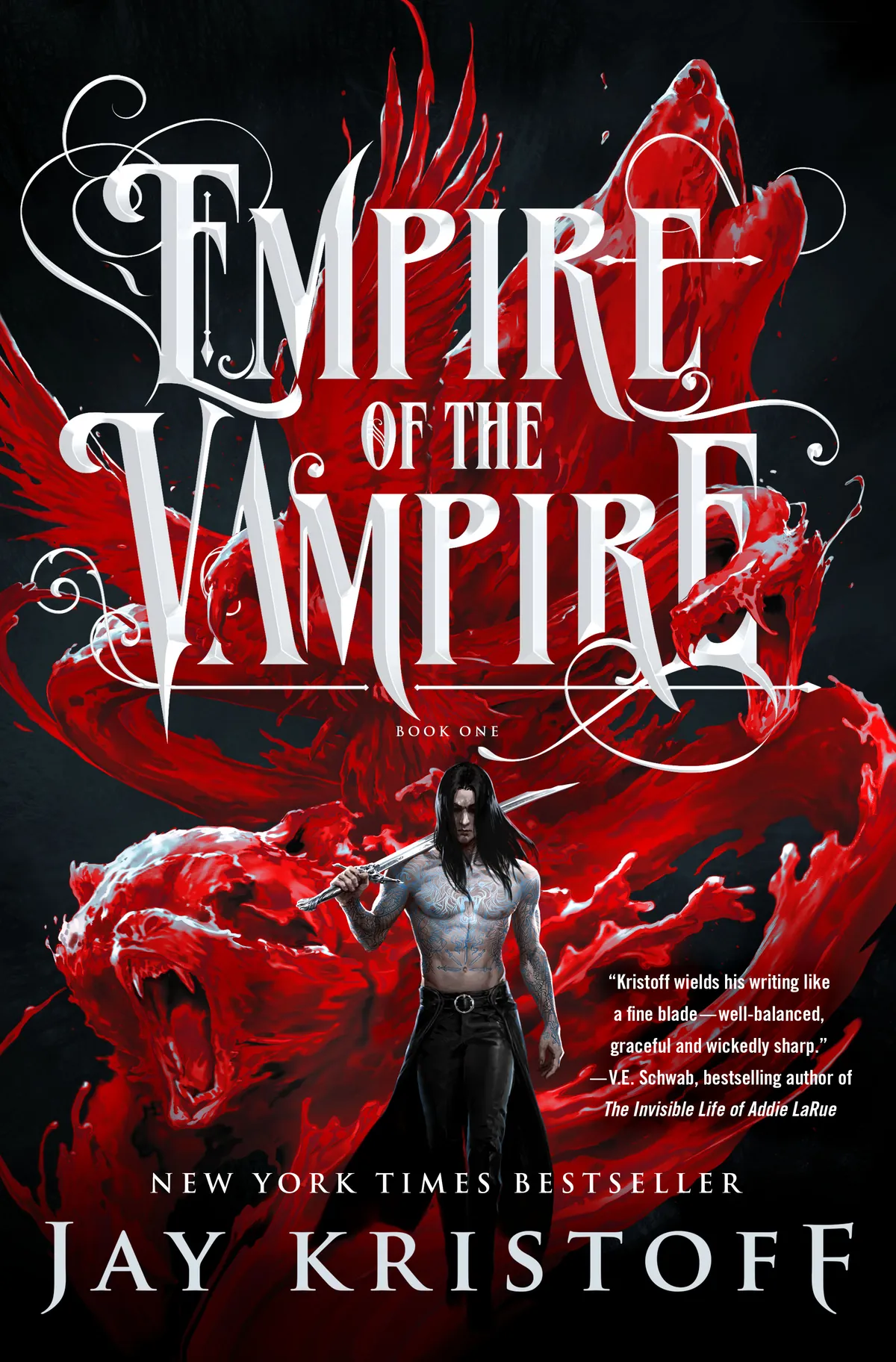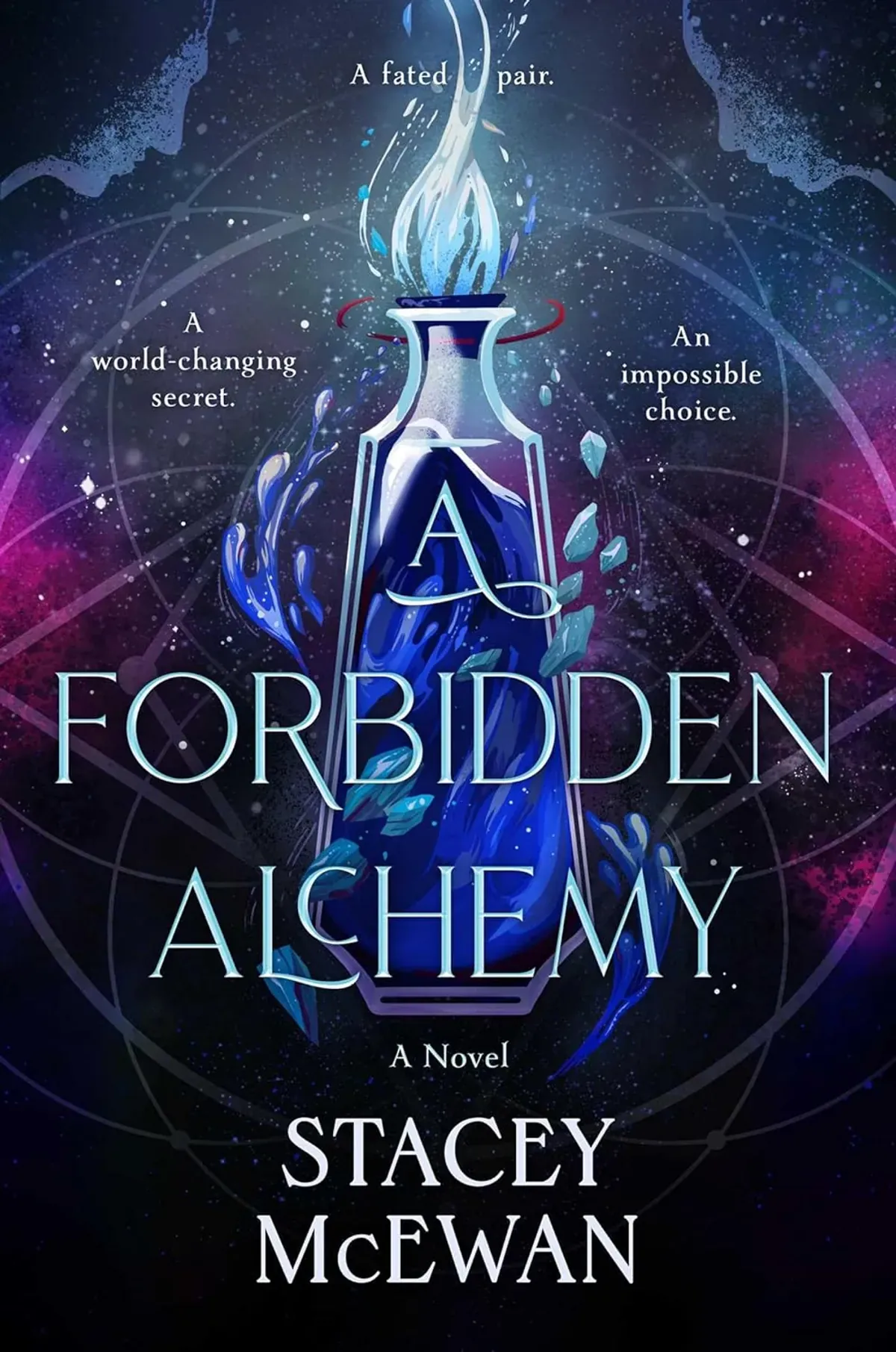A Court of Frost and Starlight
by Sarah J. Maas
Reviewed by Devin Ford on April 21, 2025
Est. Reading Time: 16 min

Quick Info
Title: A Court of Frost and Starlight
Author: Sarah J. Maas
Series: A Court of Thorns and Roses (Book 3.5)
Published: 2018
ISBN-13: 9781635575620
At a Glance: A Holiday Reprieve From War
A Court of Frost and Starlight provides a calming follow-up to the action-packed finale of the main trilogy by exploring the Winter Solstice festivities that initiate Prythian’s healing process. The novella provided me a refreshing deviation from the intense Hybern war campaign as a male reader who followed its progression. Several months subsequent to A Court of Wings and Ruin, the story unfolds through different characters’ viewpoints as they organize the first Winter Solstice celebration since the war. As High Lady of Velaris Feyre works towards rebuilding the city with a special focus on restoring its damaged artistic community. Rhysand manages his diplomatic responsibilities while handling the rising dissatisfaction among the Illyrian camps. Nesta’s destructive isolation creates growing tension particularly because her relationship with Cassian becomes more complex. At the Winter Solstice celebration which serves as the novella’s climax family bonds face trials while gifts are exchanged and groundwork for upcoming challenges is established. Although this holiday story contains less action, it delivers important character development and world-building details that enrich our understanding of Prythian during peaceful times.
A World Rebuilding
The novella A Court of Frost and Starlight sheds light on the rebuilding process of Prythian society by depicting its cultural traditions following the war. The Winter Solstice celebration offers intriguing glimpses into Fae holiday traditions which merge common practices such as gift-giving with exclusive Fae customs including the Illyrian snowball fight tradition between Rhys, Cassian, and Azriel that has lasted for centuries. Cultural discoveries enhance our understanding of the world outside of emergency situations.
Velaris emerges as the focal point when exploring detailed information about its neighborhoods and rebuilding projects especially in the Rainbow district which suffered devastation during Hybern’s attack. The portrait of Prythian society expands to include artists and creators who demonstrate civilian contributions to their world’s cultural depth beyond just warriors and courts. The comparison between Velaris’s energetic revival process and Spring Court’s deserted state demonstrates the varied ways territories coped after wartime devastation.
Post-war conditions in the different courts establish a dynamic political environment that leads to upcoming disputes. Border security issues emerge from the abandoned Spring Court’s vulnerability while the political landscape faces new tensions from Autumn Court’s territorial ambitions which will shape forthcoming narratives. Peace introduces its own sophisticated difficulties which differ from those encountered during wartime.
The Winter Solstice based worldbuilding delivers a refreshing change of perspective compared to earlier books. Prythian’s holiday traditions and seasonal elements create a sense of occupancy within its world while illustrating how its people preserve cultural ties despite past disruptions. The seasonal framework offers readers a glimpse into the world as it exists in another segment of its yearly cycle.
The novella reveals intimate aspects of character lives through their domestic settings from Velaris townhouse to the mountain cabin and Nesta’s minimal apartment which show how they build personal sanctuaries following displacement and trauma. The settings reveal character psychology and broaden our knowledge of daily life in Prythian beyond formal political gatherings and combat zones.
Characters Recovering From Trauma
The different character viewpoints throughout ACOFAS reveal intricate ways that characters experience trauma and their healing processes. Feyre exhibits profound development through her management of High Lady duties while maintaining her artistic pursuits and reconstruction projects. Through her efforts to reconnect with her sisters and establish new traditions she shows how she merges her past with her current duties while her uncertainty about her position highlights her enduring vulnerability beneath her strength.
Rhysand faces leadership burdens during reconstruction while struggling to handle Illyrian dissatisfaction as he rebuilds Velaris. The character’s relationship with Tamlin demonstrates complexity through his alternating displays of compassion and enduring bitterness which illustrates that even powerful personalities must deal with their past conflicts. Through his final act of cooking food for his old foe he demonstrates personal development while maintaining their complex past relationship.
Nesta stands out as the character with the deepest psychological complexity while her destructive actions lack sufficient explanation. Nesta’s retreat from family relationships and her descent into substance abuse and gambling point to a traumatic past during the war that she hasn’t yet processed especially regarding her father’s death and her enforced transformation. Nesta’s lack of connection with her sisters generates powerful emotional tension which leads to future narrative arcs that focus on her healing process.
Cassian presents a more layered personality than his warrior exterior would suggest through his persistent yet unsuccessful efforts to bond with Nesta. His emotional maturity is evident through his patience during her rejection yet his breaking point is shown when he throws her gift into the river revealing realistic limits to his patience. The family heirloom he procured after months of searching demonstrates his thoughtful nature and his knowledge of what would touch her heart.
The series delivers substantial character growth for secondary roles which strengthens the collective storytelling approach. Although Elain’s trauma remains silent compared to Nesta’s, it becomes equally crucial when she deals with her forced connection to Lucien and discovers meaning through her work in the garden and kitchen. Peacetime reveals individual responses from Mor, Amren and Azriel which contain hints about their personal unresolved issues for future exploration.
Plot: Celebrating Amid Reconstruction
ACOFAS’s storyline progresses through seasonal phases that culminate in the Winter Solstice celebration. The story emphasizes character interactions and reconstruction work rather than dramatic action scenes which establishes a new pace compared to earlier books while keeping readers emotionally invested. The preparation for the holiday generates a strong narrative flow that maintains interest without needing life-or-death situations.
The story succeeds through intertwined storylines which comprise the rebuilding of Velaris along with emotional relationship repairs, political territorial issues, and rising tension among Illyrian forces. The narrative presents a full depiction of post-war Prythian and establishes conflicts that will propel future series books. By presenting different perspectives readers can follow several storylines at once.
The novella centers on Feyre and Nesta’s relationship which reveals that family dynamics stay complex and painful despite their world-saving efforts. The interactions between Feyre and Nesta generate genuine tension because Feyre tries to preserve their relationship while respecting boundaries whereas Nesta battles with shame and trauma that keep her from accepting help. The relationship between Feyre and Nesta anchors the fantastic story elements within a framework of recognizable and real emotions.
Through their deliberate placement of scenes between Rhysand and Tamlin who were former enemies the narrative achieves closure without resorting to a simplistic resolution. The complex relationship between Rhysand and Tamlin shows that returning to their past relationship is impossible and requires them to find a new way forward together. The narrative reveals that peacetime demands distinct forms of bravery compared to the heroism needed on the battlefield.
The novella ends by delivering immediate resolution while setting the stage for future developments. The Winter Solstice celebration gives readers emotional closure for this chapter but Feyre and Rhysand’s house-building plans together with Nesta’s persistent isolation and courtly political tensions demonstrate that the next phase of the story still awaits beyond this pause. The narrative structure maintains harmony between the novella format and the series’ extended storyline.
Prose That Evokes Season and Mood
Maas transforms her writing approach to complement the novella’s close perspective through vivid sensory depictions of winter settings and festive occasions. The winter landscape of snow-covered Velaris combined with images of warm hearth fires and holiday foods along with festive decorations establish a welcoming atmosphere which stands apart from the previous books’ epic scale but retains the sensory experience readers anticipate. The detailed descriptions successfully immerse readers in the seasonal environment.
Through multiple perspectives Maas demonstrates her skill in creating individual voices for each character in the story. The personalized prose styles through which Feyre expresses artistic observations, Rhysand illustrates strategic thinking, Cassian delivers straightforward assessments and Nesta communicates detached bitterness deepen the character development. The diversity of viewpoints delivers an exhaustive depiction of post-war Prythian which a single narrative cannot achieve.
The series achieves its characteristic dialogue by mixing modern informal speech with formal language during official events. The informal dialogue of the Inner Circle stands in sharp contrast to the strained communication between estranged characters demonstrating how language mirrors relationship dynamics. Through their sharp exchanges Nesta and Cassian show readers how dialogue drives character growth within narratives that focus less on plot progression.
This story devotes more attention to emotional introspection than earlier action-focused books which provides readers enhanced insight into characters’ inner thoughts. Through internal monologues readers discover hidden fears as well as unresolved trauma and personal aspirations which contribute depth to character relationships. The novella employs an introspective approach because its main themes involve healing and reflection following intense external conflict.
The writing finds a balance between joyful holiday experiences and serious acknowledgments of loss and trauma. The novella maintains balance by steering clear of excessive sweetness and sadness to depict how festive celebration and deep sorrow intertwine during significant historical events such as wars.
Between the Sheets: Restrained Intimacy
BroMantasy Spice Rating
Light Play
(Passionate Moments)
ACOFAS receives a spice level of 🌶️🌶️ (2.0) because its romantic content exhibits more restraint than earlier books in the series. The established relationship between Feyre and Rhysand contains intimate moments designed to highlight emotional connection instead of explicit details. The physical relationship between Feyre and Rhysand exists mostly to show their healing process and dedication to establishing their family unit instead of advancing the storyline.
The contrast between Nesta and Cassian’s unresolved tension with Feyre and Rhysand’s harmonious partnership serves to highlight both relationships. Their struggling attraction emerges as argumentative encounters and physical proximity without full intimacy generates suspense for upcoming progression. The novella builds romantic tension through a gradual development that avoids physical consummation.
The uneasy separation between Elain and Lucien despite their established mate bond introduces intricate layers to romantic dynamics in this universe. The connection between partners proves insufficient for romantic achievement when factors like trauma and individual decisions are involved. The world’s romantic systems gain depth from its complex treatment of destined relationships.
The novel develops romance through emotional intimacy established by gift exchanges which differs from previous works. The careful selection of gifts including art supplies and family heirlooms illustrates that these characters possess a deep understanding of each other’s needs and desires. The exchanges between characters provide deeper insights into their relationships compared to physical intimacy in this setting.
Feyre’s declaration of her desire to conceive with Rhysand in the novel’s ultimate romantic scene combines physical intimacy with deep emotional resonance. Their choice goes beyond physical closeness to demonstrate a deep resolve for healing which allows them to build a shared future together after both dealing with their trauma. The novella uses controlled romantic scenes to deepen its character development.
Bro Reading Comfort: Holiday Ease
The novella ACOFAS receives an adult content rating of 😳 (1.5) due to its reduced number of uncomfortable reading moments when compared to previous books in the series. The novella presents fewer intimate scenes which prioritize emotional depth over explicit elements thus making it better suited for public reading compared to earlier books. The holiday atmosphere helps make the content suitable for casual reading.
Readers gain direct access to male experiences through substantial chapters written from the perspectives of male characters Rhysand and Cassian. Male readers find a connection to this fantasy world through the male characters’ experiences with leadership struggles and warrior traditions along with their romantic challenges. The male perspectives present in this book counterbalance the previous books which mainly focused on female viewpoints.
The book uses post-war politics and rebuilding efforts alongside territorial security to root its fantasy world in strategic and governance challenges which attract readers who enjoy realistic political and security dilemmas. The series includes significant non-romantic material that maintains the series’ emotional foundation. The novella becomes approachable to readers with diverse literary tastes because of its balanced storytelling.
The story’s seasonal backdrop introduces classic holiday themes like gift exchanges and family conflicts that go beyond gender roles. Fantasy elements become more accessible to readers because their universal experiences connect to familiar holiday traditions from the real world. Family dynamics at holiday gatherings resonate with most readers irrespective of their gender identity and preferred reading genres.
Its novella length paired with episodic storytelling renders the book more accessible than full-scale fantasy novels. The shorter book format lets readers explore its world and characters without the need for a lengthy reading commitment thus providing an appealing introduction to fantasy series for readers who might be reluctant to tackle extensive fantasy novels. The book’s accessibility allows for easy reading during informal public moments.
Darkness That Lingers in Peace
Even though ACOFAS takes place during the holidays it receives a darkness rating of 💀💀 (2.0) because of its direct depiction of ongoing trauma after war ends. The darkness in this narrative emerges from psychological battles faced by characters who try to reconstruct their lives after experiencing wartime horrors. The internal struggles characters face generate an alternative but equally powerful manifestation of darkness.
Through self-destructive actions as well as emotional detachment and seclusion Nesta demonstrates the clearest symptoms of trauma. Her experience of enduring her father’s death and her unexpected personal transformation demonstrates how trauma can shatter even the most resilient individuals. Her storyline demonstrates that healing does not follow simple patterns even with available support and presents this reality truthfully.
The derelict Spring Court embodies the destruction of emotional turmoil. Tamlin’s depression and isolation have resulted in basic governance failure while the previously vibrant territory deteriorates into neglect. The deterioration of the territory stands as a physical representation of mental decline and generates real concerns over the political and defensive risks of a border without protection.
A new type of darkness spreads through the Illyrian camps because internal rebellion threatens to break out. The tension among warriors who feel their families were intentionally lost during the war cannot be settled by direct combat. The current political darkness demands complex strategies to solve it that go beyond the approaches used for past external threats.
Ostensibly celebratory scenes still contain references to wartime losses. The war’s costs remain in the damaged Rainbow buildings while absent family members and altered relationships serve as constant reminders. The elements illustrate a balance between joy and grief which keeps the holiday setting from becoming overly sweet by recognizing that celebration and remembrance of loss happen together.
Book Battlefield: The Interlude’s Place
The work ACOFAS serves as a transitional piece connecting the original trilogy with subsequent books that introduce new characters. The transitional nature of this role positions it alongside fantasy interludes such as Tolkien’s “The Scouring of the Shire” and epilogue chapters from multiple fantasy series which depict post-major conflict scenarios. The novella demonstrates success through its understanding of victory’s limitations by building new conflicts instead of just wrapping up old ones.
This fantastical novella distinguishes itself by concentrating on characters’ healing after conflict instead of presenting new romantic storylines. While a majority of series introduce fresh romantic pairings with each release ACOFAS develops existing relationships and sets the foundation for upcoming love stories. The storytelling method ensures ongoing narrative consistency and acknowledges that current relationships naturally progress past their original formation stage.
ACOFAS shares narrative space with other seasonal genre works that use holiday settings to study character relationships when they face the pressures of traditional celebrations. In contemporary fiction the Winter Solstice operates as an event with parallel narrative roles to Christmas and other winter holidays through its facilitation of family gatherings, gift exchanges, and year-end reflections.
The use of multiple perspectives in ACOFAS links it to ensemble fantasy stories that give more importance to community bonds instead of single hero narratives. This narrative technique mirrors transitional volumes from The Wheel of Time or Malazan Book of the Fallen because these works show how major world events impact characters differently and require individual examination. Different perspectives together provide a comprehensive view of society after the war.
ACOFAS’ status as a novella instead of a full-length novel makes it suitable for comparison with similar fantasy novellas such as Martha Wells’ Murderbot series and Seanan McGuire’s Wayward Children series. The condensed format enables the narrative to highlight emotional moments and worldbuilding elements instead of intricate plot structures which allows for thorough investigation into selected world and character aspects without needing full novel narrative speed.
Should You Bother?
For Trilogy Readers: ACOFAS delivers important character development and worldbuilding elements which deepen comprehension of the original trilogy and prepare readers for upcoming books. The book’s use of multiple perspectives gives new understanding of familiar characters which proves valuable for readers who usually favor fast-paced action stories. The novella reveals how Prythian starts its recovery process but also introduces new intriguing questions.
For Holiday Story Fans: The Winter Solstice setting delivers an ideal cozy reading experience for the holiday season. The holiday season’s emotional depth emerges through activities like gift exchanges and family meals which showcase celebratory joy as well as the reminder of missing loved ones and familial conflicts. The seasonal elements enhance the book’s appeal for winter reading enjoyment.
For Character-Focused Readers: The plot’s brevity permits detailed examination of characters which surpasses action-centered storylines particularly in assessing trauma processing and healing attempts across different personalities. The narrative’s multiple perspectives reveal different coping strategies ranging from Feyre’s constructive rebuilding efforts to Nesta’s harmful self-isolation which deepens psychological insight into known characters.
For Worldbuilding Enthusiasts: When the Prythian society operates during peacetime its unique aspects emerge beyond survival-focused wartime functions. The storyline now explores cultural traditions along with holiday customs and artistic communities which had remained untouched through the previous books’ high-stakes conflicts. The provided details help construct an enriched image of both the world and its people and demonstrate how regular life could proceed outside of crisis situations.
Final BroMantasy Verdict
A Court of Frost and Starlight functions as an essential pause following the original trilogy’s intensity while effectively setting up future plot lines. The novella structure achieves its goal by resolving wartime issues while unveiling new character developments and political conflicts that suggest exciting future stories. The use of seasonality provides an emotionally powerful structure through which readers can explore community recovery from destruction.
By examining multiple viewpoints we obtain a deeper comprehension of the inner circle which extends past Feyre’s personal perspective. Through different perspectives we see how each character handles their trauma uniquely showing Rhysand’s leadership obligations alongside Nesta’s turn toward isolation. These psychological insights strengthen our bond with the ensemble cast and establish character arcs that need further development in future books.
The series reduces its focus on physical intimacy to concentrate on emotional growth which helps readers who struggle with more explicit content find an easier way into the story. This narrative method illustrates the potential of romantasy to maintain equilibrium between relationship growth and other story components during critical transitions between primary story arcs. The story maintains emotional bonds as a primary element without depending on explicit material.
ACOFAS demonstrates the importance of quieter narratives within epic fantasy settings. World-ending threats and revolutionary changes aren’t essential for meaningful character development and worldbuilding throughout every installment. The novella exemplifies how smaller-scale stories can establish a detailed fantasy world where characters experience growth through reflection instead of constant emergency responses. This breathing room enhances character depth while simultaneously improving reader engagement with them.
You Might Also Enjoy
Frequently Asked Questions
Is this book part of a series?
Yes, this is book 3.5 in the A Court of Thorns and Roses series.
How spicy is the romance?
We rate the spice level at 🌶️🌶️ (2/5). Brief intimate moments between established couples focus more on emotional connection than explicit detail
How uncomfortable is it to read in public?
We rate the public reading discomfort level at 😳 (1.5/5). Minimal discomfort with occasional intimate scenes easily skippable for public reading
How dark are the themes in this book?
We rate the darkness level at 💀💀 (2/5). Confronts the aftermath of war through unresolved trauma instead of active violence
What age group is this book for?
This book is generally recommended for adult readers due to its mature themes. We recommend checking specific content warnings if you are sensitive to certain topics.





